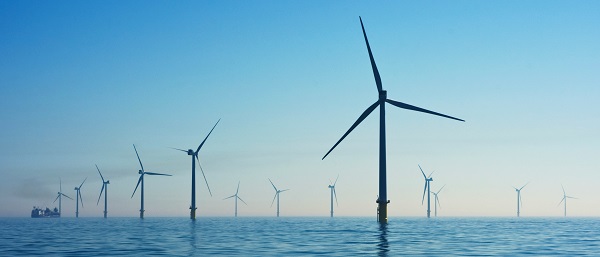Alberta
Hinshaw challenged over violating Charter freedoms of Albertans

Originally published on October 29, 2020 by The Justice Centre for Constitutional Freedoms
CALGARY: The Justice Centre today responded to new violations of the Charter-protected freedoms of association and peaceful assembly, announced earlier this week by Dr. Deena Hinshaw, Alberta’s Chief Medical Officer.
On October 26, Dr. Hinshaw declared that Albertans in Calgary and Edmonton cannot gather in groups larger than 15 for dinner parties, birthday parties, wedding and funeral receptions, retirement parties, baby showers and other social events.
“This Order violates freedom of association and freedom of peaceful assembly, as protected by the Canadian Charter of Rights and Freedoms,” stated lawyer John Carpay, president of the Justice Centre.
“This Order is based on ‘cases’ of COVID-19 in Alberta, including thousands of ‘cases’ among people who are not experiencing any symptoms or illness. This Order is not properly grounded in relevant considerations such as deaths, hospitalizations, and ICU capacity, and is therefore not a justifiable violation of fundamental Charter freedoms,” continued Carpay.
Prior to lockdowns being imposed this past March, the word “cases” typically referred to people who are actually sick and clearly displaying symptoms. But today’s “cases” include completely healthy people who simply had a positive PCR test. The reliability of the PCR tests is increasingly in dispute, with the number of false positives as high as 90% according to some reports.
Unsurprisingly, the number of “cases” rises with the number of tests that governments conduct. For example, September saw 28,763 “cases” in Canada, as a result of testing almost two million Canadians.
“What really matters is not the ‘cases’ of perfectly healthy people, but rather the fact that 25,000 Canadians die each month,” explained Carpay. “In September, 171 of those 25,000 Canadian deaths were attributed to COVID-19.”
The media continues to hype “cases” and warn of a “second wave.” Yet government data
shows that since May, monthly COVID-19 deaths in Alberta have remained under 50, with more than 2,000 Albertans dying each and every month of other causes, based on 27,000 Albertans dying each year. Deaths peaked in April and May, when 134 Albertans died along with about 4,000 Albertans who died in those same two months from other causes.
In Alberta and elsewhere, COVID-19 significantly threatens elderly people with one, two, three or more serious pre-existing health conditions, as well as a very small number of adults under 60. However, COVID-19 does not have a significant impact on overall life expectancy. The average age of those reported as COVID deaths in Alberta is 83. Life expectancy in Alberta is 82. To date, 309 Albertans, predominantly elderly near the final stages of their life, have died of COVID-19, almost all of them with one or more serious comorbidities.
“Government data shows that COVID-19 is not the unusually deadly killer that Premier Kenney and Dr. Hinshaw made it out to be when they claimed in April that—even with lockdown measures in place—as many as 32,000 Albertans would die of the virus,” stated Carpay.
“Politicians claim that the lockdowns saved many lives, but they have yet to put forward actual evidence that might support their speculation and conjecture,” stated Carpay.
“Each of Alberta’s 309 COVID-19 deaths is sad and tragic, and so are the other 26,917 deaths that occur in Alberta each year,” continued Carpay.
Each and every month, Albertans mourn the passing of over 2,000 friends and family members, who die of cancer, car accidents, alcoholism, drug overdoses, suicide, heart disease, delayed surgeries, and many other causes. In the past seven months more than 14,000 Albertans have died, 309 of the virus and the remainder of other causes.
Since March, lockdown harms such as increase in drug overdoses, which kill more Albertans than COVID-19 does, have been either ignored or accepted, as if dying of COVID-19 is somehow worse than dying of another cause.
“In light of the Alberta government’s own data on COVID-19 deaths, there is no rational basis for forcing all Albertans to continue living in fear,” stated Carpay.
“Alberta’s politicians and health officials should focus their attention on protecting those who are at serious risk from COVID-19, rather than violating the Charter freedoms of the entire population,” stated Carpay.
“Albertans, and all Canadians, should exercise their freedom of association and freedom of peaceful assembly without fear of prosecution or penalty. This is especially true for the young, who are at more risk of being struck by lightning than dying of COVID,” concluded Carpay.
Source: https://www.jccf.ca
Alberta
The Canadian Energy Centre’s biggest stories of 2025

From the Canadian Energy Centre
Canada’s energy landscape changed significantly in 2025, with mounting U.S. economic pressures reinforcing the central role oil and gas can play in safeguarding the country’s independence.
Here are the Canadian Energy Centre’s top five most-viewed stories of the year.
5. Alberta’s massive oil and gas reserves keep growing – here’s why

The Northern Lights, aurora borealis, make an appearance over pumpjacks near Cremona, Alta., Thursday, Oct. 10, 2024. CP Images photo
Analysis commissioned this spring by the Alberta Energy Regulator increased the province’s natural gas reserves by more than 400 per cent, bumping Canada into the global top 10.
Even with record production, Alberta’s oil reserves – already fourth in the world – also increased by seven billion barrels.
According to McDaniel & Associates, which conducted the report, these reserves are likely to become increasingly important as global demand continues to rise and there is limited production growth from other sources, including the United States.
4. Canada’s pipeline builders ready to get to work
Canada could be on the cusp of a “golden age” for building major energy projects, said Kevin O’Donnell, executive director of the Mississauga, Ont.-based Pipe Line Contractors Association of Canada.
That eagerness is shared by the Edmonton-based Progressive Contractors Association of Canada (PCA), which launched a “Let’s Get Building” advocacy campaign urging all Canadian politicians to focus on getting major projects built.
“The sooner these nation-building projects get underway, the sooner Canadians reap the rewards through new trading partnerships, good jobs and a more stable economy,” said PCA chief executive Paul de Jong.
3. New Canadian oil and gas pipelines a $38 billion missed opportunity, says Montreal Economic Institute

Steel pipe in storage for the Trans Mountain Pipeline expansion in 2022. Photo courtesy Trans Mountain Corporation
In March, a report by the Montreal Economic Institute (MEI) underscored the economic opportunity of Canada building new pipeline export capacity.
MEI found that if the proposed Energy East and Gazoduq/GNL Quebec projects had been built, Canada would have been able to export $38 billion worth of oil and gas to non-U.S. destinations in 2024.
“We would be able to have more prosperity for Canada, more revenue for governments because they collect royalties that go to government programs,” said MEI senior policy analyst Gabriel Giguère.
“I believe everybody’s winning with these kinds of infrastructure projects.”
2. Keyera ‘Canadianizes’ natural gas liquids with $5.15 billion acquisition

Keyera Corp.’s natural gas liquids facilities in Fort Saskatchewan, Alta. Photo courtesy Keyera Corp.
In June, Keyera Corp. announced a $5.15 billion deal to acquire the majority of Plains American Pipelines LLP’s Canadian natural gas liquids (NGL) business, creating a cross-Canada NGL corridor that includes a storage hub in Sarnia, Ontario.
The acquisition will connect NGLs from the growing Montney and Duvernay plays in Alberta and B.C. to markets in central Canada and the eastern U.S. seaboard.
“Having a Canadian source for natural gas would be our preference,” said Sarnia mayor Mike Bradley.
“We see Keyera’s acquisition as strengthening our region as an energy hub.”
1. Explained: Why Canadian oil is so important to the United States

Enbridge’s Cheecham Terminal near Fort McMurray, Alberta is a key oil storage hub that moves light and heavy crude along the Enbridge network. Photo courtesy Enbridge
The United States has become the world’s largest oil producer, but its reliance on oil imports from Canada has never been higher.
Many refineries in the United States are specifically designed to process heavy oil, primarily in the U.S. Midwest and U.S. Gulf Coast.
According to the Alberta Petroleum Marketing Commission, the top five U.S. refineries running the most Alberta crude are:
- Marathon Petroleum, Robinson, Illinois (100% Alberta crude)
- Exxon Mobil, Joliet, Illinois (96% Alberta crude)
- CHS Inc., Laurel, Montana (95% Alberta crude)
- Phillips 66, Billings, Montana (92% Alberta crude)
- Citgo, Lemont, Illinois (78% Alberta crude)
Alberta
Alberta project would be “the biggest carbon capture and storage project in the world”

Pathways Alliance CEO Kendall Dilling is interviewed at the World Petroleum Congress in Calgary, Monday, Sept. 18, 2023.THE CANADIAN PRESS/Jeff McIntosh
From Resource Works
Carbon capture gives biggest bang for carbon tax buck CCS much cheaper than fuel switching: report
Canada’s climate change strategy is now joined at the hip to a pipeline. Two pipelines, actually — one for oil, one for carbon dioxide.
The MOU signed between Ottawa and Alberta two weeks ago ties a new oil pipeline to the Pathways Alliance, which includes what has been billed as the largest carbon capture proposal in the world.
One cannot proceed without the other. It’s quite possible neither will proceed.
The timing for multi-billion dollar carbon capture projects in general may be off, given the retreat we are now seeing from industry and government on decarbonization, especially in the U.S., our biggest energy customer and competitor.
But if the public, industry and our governments still think getting Canada’s GHG emissions down is a priority, decarbonizing Alberta oil, gas and heavy industry through CCS promises to be the most cost-effective technology approach.
New modelling by Clean Prosperity, a climate policy organization, finds large-scale carbon capture gets the biggest bang for the carbon tax buck.
Which makes sense. If oil and gas production in Alberta is Canada’s single largest emitter of CO2 and methane, it stands to reason that methane abatement and sequestering CO2 from oil and gas production is where the biggest gains are to be had.
A number of CCS projects are already in operation in Alberta, including Shell’s Quest project, which captures about 1 million tonnes of CO2 annually from the Scotford upgrader.
What is CO2 worth?
Clean Prosperity estimates industrial carbon pricing of $130 to $150 per tonne in Alberta and CCS could result in $90 billion in investment and 70 megatons (MT) annually of GHG abatement or sequestration. The lion’s share of that would come from CCS.
To put that in perspective, 70 MT is 10% of Canada’s total GHG emissions (694 MT).
The report cautions that these estimates are “hypothetical” and gives no timelines.
All of the main policy tools recommended by Clean Prosperity to achieve these GHG reductions are contained in the Ottawa-Alberta MOU.
One important policy in the MOU includes enhanced oil recovery (EOR), in which CO2 is injected into older conventional oil wells to increase output. While this increases oil production, it also sequesters large amounts of CO2.
Under Trudeau era policies, EOR was excluded from federal CCS tax credits. The MOU extends credits and other incentives to EOR, which improves the value proposition for carbon capture.
Under the MOU, Alberta agrees to raise its industrial carbon pricing from the current $95 per tonne to a minimum of $130 per tonne under its TIER system (Technology Innovation and Emission Reduction).
The biggest bang for the buck
Using a price of $130 to $150 per tonne, Clean Prosperity looked at two main pathways to GHG reductions: fuel switching in the power sector and CCS.
Fuel switching would involve replacing natural gas power generation with renewables, nuclear power, renewable natural gas or hydrogen.
“We calculated that fuel switching is more expensive,” Brendan Frank, director of policy and strategy for Clean Prosperity, told me.
Achieving the same GHG reductions through fuel switching would require industrial carbon prices of $300 to $1,000 per tonne, Frank said.
Clean Prosperity looked at five big sectoral emitters: oil and gas extraction, chemical manufacturing, pipeline transportation, petroleum refining, and cement manufacturing.
“We find that CCUS represents the largest opportunity for meaningful, cost-effective emissions reductions across five sectors,” the report states.

Fuel switching requires higher carbon prices than CCUS.
Measures like energy efficiency and methane abatement are included in Clean Prosperity’s calculations, but again CCS takes the biggest bite out of Alberta’s GHGs.
“Efficiency and (methane) abatement are a portion of it, but it’s a fairly small slice,” Frank said. “The overwhelming majority of it is in carbon capture.”

From left, Alberta Minister of Energy Marg McCuaig-Boyd, Shell Canada President Lorraine Mitchelmore, CEO of Royal Dutch Shell Ben van Beurden, Marathon Oil Executive Brian Maynard, Shell ER Manager, Stephen Velthuizen, and British High Commissioner to Canada Howard Drake open the valve to the Quest carbon capture and storage facility in Fort Saskatchewan Alta, on Friday November 6, 2015. Quest is designed to capture and safely store more than one million tonnes of CO2 each year an equivalent to the emissions from about 250,000 cars. THE CANADIAN PRESS/Jason Franson
Credit where credit is due
Setting an industrial carbon price is one thing. Putting it into effect through a workable carbon credit market is another.
“A high headline price is meaningless without higher credit prices,” the report states.
“TIER credit prices have declined steadily since 2023 and traded below $20 per tonne as of November 2025. With credit prices this low, the $95 per tonne headline price has a negligible effect on investment decisions and carbon markets will not drive CCUS deployment or fuel switching.”
Clean Prosperity recommends a kind of government-backstopped insurance mechanism guaranteeing carbon credit prices, which could otherwise be vulnerable to political and market vagaries.
Specifically, it recommends carbon contracts for difference (CCfD).
“A straight-forward way to think about it is insurance,” Frank explains.
Carbon credit prices are vulnerable to risks, including “stroke-of-pen risks,” in which governments change or cancel price schedules. There are also market risks.
CCfDs are contractual agreements between the private sector and government that guarantees a specific credit value over a specified time period.
“The private actor basically has insurance that the credits they’ll generate, as a result of making whatever low-carbon investment they’re after, will get a certain amount of revenue,” Frank said. “That certainty is enough to, in our view, unlock a lot of these projects.”
From the perspective of Canadian CCS equipment manufacturers like Vancouver’s Svante, there is one policy piece still missing from the MOU: eligibility for the Clean Technology Manufacturing (CTM) Investment tax credit.
“Carbon capture was left out of that,” said Svante co-founder Brett Henkel said.
Svante recently built a major manufacturing plant in Burnaby for its carbon capture filters and machines, with many of its prospective customers expected to be in the U.S.
The $20 billion Pathways project could be a huge boon for Canadian companies like Svante and Calgary’s Entropy. But there is fear Canadian CCS equipment manufacturers could be shut out of the project.
“If the oil sands companies put out for a bid all this equipment that’s needed, it is highly likely that a lot of that equipment is sourced outside of Canada, because the support for Canadian manufacturing is not there,” Henkel said.
Henkel hopes to see CCS manufacturing added to the eligibility for the CTM investment tax credit.
“To really build this eco-system in Canada and to support the Pathways Alliance project, we need that amendment to happen.”
Resource Works News
-

 Bruce Dowbiggin2 days ago
Bruce Dowbiggin2 days agoIn Contentious Canada Reality Is Still Six Degrees Of Hockey
-

 Alberta1 day ago
Alberta1 day agoThe Canadian Energy Centre’s biggest stories of 2025
-

 Business1 day ago
Business1 day agoResurfaced Video Shows How Somali Scammers Used Day Care Centers To Scam State
-

 Business14 hours ago
Business14 hours agoDark clouds loom over Canada’s economy in 2026
-

 Business2 days ago
Business2 days agoDOOR TO DOOR: Feds descend on Minneapolis day cares tied to massive fraud
-

 Addictions11 hours ago
Addictions11 hours agoCoffee, Nicotine, and the Politics of Acceptable Addiction
-

 Business2 days ago
Business2 days agoCanada needs serious tax cuts in 2026
-

 Business1 day ago
Business1 day agoOttawa Is Still Dodging The China Interference Threat










